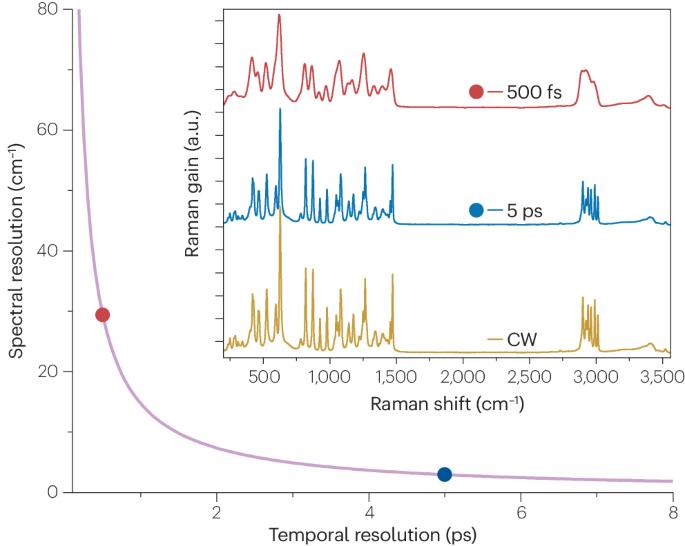Femtosecond stimulated Raman spectroscopy
IF 56
Q1 MULTIDISCIPLINARY SCIENCES
引用次数: 0
Abstract
First demonstrated in 1994, femtosecond stimulated Raman scattering (FSRS) has gained popularity since the early 2000s as an ultrafast pump–probe vibrational spectroscopy technique with the potential to circumvent the time and energy limitations imposed by the Heisenberg uncertainty principle. This Primer explores whether, why, when and how the temporal precision and frequency resolution of traditional time-resolved spontaneous Raman spectroscopy can be surpassed by its coherent counterpart (FSRS), while still adhering to the uncertainty principle. We delve into the fundamental concepts behind FSRS and its most common experimental implementations, focusing on instrumentation details, measurement techniques, data analysis and modelling. This includes discussions on synthesizing the Raman pump beam, artificial intelligence (AI)-assisted baseline removal methods and analytical expressions for reproducing experimental data and extracting key parameters such as relaxation times and out-of-equilibrium temperature profiles. Recent applications of FSRS from physics, chemistry and biology are showcased, demonstrating how this approach has facilitated cross-disciplinary studies. We also address the technical and conceptual limitations of FSRS to aid in designing optimal experiments based on specific goals. Finally, we explore future directions, including multidimensional extensions to address vibrational couplings and the use of quantum light to untangle temporal and spectral resolution. Femtosecond stimulated Raman scattering (FSRS) is an ultrafast pump–probe spectroscopy method for investigating the vibrational dynamics of molecules. In this Primer, Batignani et al. introduce the fundamental concepts behind FSRS, its current utility and future integrations of artificial intelligence and quantum light.

飞秒受激拉曼光谱
飞秒受激拉曼散射(FSRS)于 1994 年首次展示,作为一种超快泵探振动光谱技术,它具有规避海森堡不确定性原理带来的时间和能量限制的潜力,自 2000 年代初以来广受欢迎。本《入门》探讨了传统时间分辨自发拉曼光谱的时间精度和频率分辨率能否、为何、何时以及如何被其相干对应技术 (FSRS)超越,同时仍然遵守不确定性原理。我们将深入探讨 FSRS 背后的基本概念及其最常见的实验实现方法,重点是仪器细节、测量技术、数据分析和建模。这包括讨论拉曼泵束的合成、人工智能(AI)辅助的基线去除方法以及重现实验数据和提取弛豫时间和失衡温度曲线等关键参数的分析表达式。我们展示了 FSRS 在物理学、化学和生物学领域的最新应用,说明这种方法如何促进了跨学科研究。我们还讨论了 FSRS 在技术和概念上的局限性,以帮助根据特定目标设计最佳实验。最后,我们探讨了未来的发展方向,包括多维度扩展以解决振动耦合问题,以及利用量子光解开时间和光谱分辨率的问题。飞秒受激拉曼散射(FSRS)是一种研究分子振动动力学的超快泵探光谱学方法。在这本《入门》中,Batignani 等人介绍了飞秒刺激拉曼散射背后的基本概念、其当前的实用性以及人工智能与量子光的未来融合。
本文章由计算机程序翻译,如有差异,请以英文原文为准。
求助全文
约1分钟内获得全文
求助全文

 求助内容:
求助内容: 应助结果提醒方式:
应助结果提醒方式:


